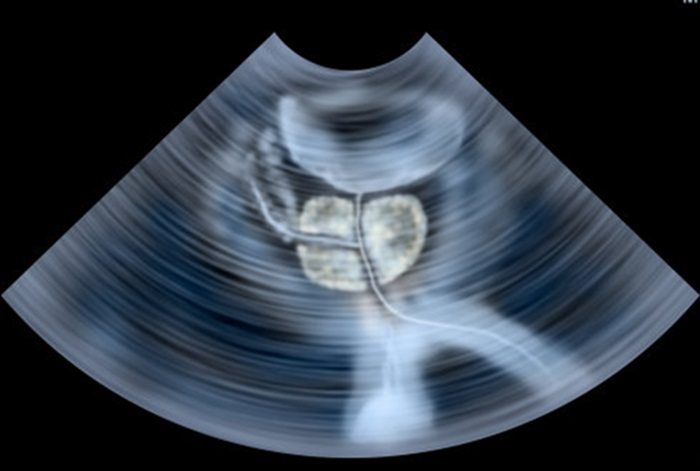The prostate gland is an important part of the male reproductive system. As men age, it’s quite common to hear about the prostate gland becoming enlarged. But the question remains: is a slightly enlarged prostate normal? To answer this, we need to understand the nature of prostate enlargement, its causes, and its implications.
Understanding Prostate Enlargement
What is Prostate Enlargement? The prostate gland surrounds the urethra, the tube that carries urine from the bladder out of the body. Benign Prostatic Hyperplasia (BPH), which is the non – cancerous enlargement of the prostate, occurs when the cells of the prostate gland multiply. This growth can put pressure on the urethra, leading to various urinary symptoms. A slightly enlarged prostate refers to a relatively early stage of this growth process.
Prevalence: Prostate enlargement is a very common condition among older men. It’s estimated that more than half of men in their 60s and as many as 90% of men in their 70s and 80s have some degree of BPH. This high prevalence might lead some to think that a slight enlargement is just a normal part of the aging process.
Causes of Slight Prostate Enlargement
Hormonal Changes: Testosterone, the male sex hormone, plays a role in prostate growth. As men age, hormonal changes occur. Testosterone levels may decline slightly, but the conversion of testosterone to dihydrotestosterone (DHT) in the prostate gland can increase. DHT is a more potent androgen that stimulates prostate cell growth. Even a small imbalance in these hormonal processes can lead to a gradual enlargement of the prostate.
Cellular Aging: Over time, the cells in the prostate may accumulate genetic and epigenetic changes. These changes can disrupt the normal regulation of cell growth and division. The prostate cells may start to multiply more than they should, leading to a slightly enlarged state. In addition, inflammation within the prostate, which can be caused by factors such as infections, diet, or lifestyle, may also contribute to early – stage enlargement.
Symptoms Associated with Slightly Enlarged Prostate
Urinary Changes: The most common symptoms are related to the urinary tract. A man with a slightly enlarged prostate may notice an increased frequency of urination, especially at night (nocturia). He might also experience a weak or interrupted urine stream, difficulty starting or stopping urination, or a feeling of incomplete bladder emptying. However, in the early stages of enlargement, these symptoms may be mild and not overly bothersome.
Sexual Function: In some cases, a slightly enlarged prostate can also affect sexual function. There may be a decrease in libido or erectile dysfunction. This is because the enlarged prostate can interfere with the blood vessels and nerves that are important for normal sexual function.
Is it Normal?
From a Physiological Perspective: A certain degree of prostate enlargement as a man ages can be considered a normal physiological response to hormonal and cellular changes. The body’s systems are complex and constantly evolving. Just like other organs can change with age, the prostate is also subject to these alterations. However, “normal” doesn’t mean it’s without consequences.
In Terms of Health Impact: Even a slight enlargement can lead to discomfort and potential health problems if left untreated. The urinary symptoms can disrupt sleep patterns, affect quality of life, and in more severe cases, lead to complications such as urinary tract infections, bladder stones, or kidney damage due to back – pressure on the kidneys. Therefore, while a slightly enlarged prostate may be a common occurrence, it’s important to monitor it and manage the symptoms.
Management and Monitoring
Lifestyle Modifications: For a slightly enlarged prostate, lifestyle changes can play a significant role. Maintaining a healthy weight through diet and exercise is crucial. A diet rich in fruits, vegetables, and whole grains and low in saturated fats and red meat may be beneficial. Regular physical activity, such as walking, jogging, or swimming, can also help. Reducing caffeine and alcohol intake can alleviate some of the urinary symptoms.
Medical Monitoring: Regular check – ups with a healthcare provider are essential. The doctor may perform a digital rectal examination (DRE) to assess the size and texture of the prostate. Prostate – specific antigen (PSA) blood tests can also be used to screen for prostate problems, although an elevated PSA doesn’t always indicate cancer and can be due to BPH. If symptoms worsen, further diagnostic tests like a urine flow study or an ultrasound may be recommended.
Treatment Options: In the early stages, medications may be prescribed to relax the muscles around the prostate and bladder neck, improving urinary flow. These include alpha – blockers. Another class of drugs, 5 – alpha reductase inhibitors, can slow down the growth of the prostate by reducing DHT levels. In some cases, minimally invasive procedures or surgery may be considered if the enlargement progresses and causes more severe symptoms.
Conclusion
A slightly enlarged prostate is a common phenomenon as men age, but it’s not without significance. While it can be considered a normal part of the aging process in terms of its occurrence, it’s important to view it as a condition that requires attention. By understanding the causes, symptoms, and available management strategies, men can take proactive steps to ensure that a slightly enlarged prostate doesn’t lead to more serious health problems and maintain a good quality of life.
Related topics:


